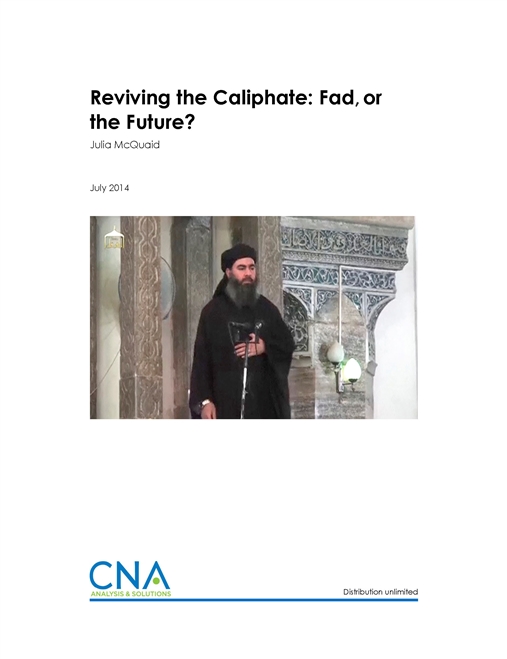A caliphate is an Islamic form of government in which political and religious leadership is united, and the head of state (the caliph) is a successor to the Prophet Muhammad. The first caliphate was established in 632 A.D. after the death of the Prophet Muhammad. Caliphates rose and fell in the Muslim world until 1924, when Mustafa Kemal Ataturk abolished the Ottoman caliphate, essentially putting an end to the institution. For nearly one hundred years, although various groups advocated for the restoration of the caliphate, no one has claimed the position of caliph—that is, until June 2014, when the Islamic State of Iraq and the Levant (ISIL)1 declared the creation of a new caliphate, the “Islamic State.”
In 2007, CNA hosted a conference on the topic of the caliphate. At that time, there were calls for the re-establishment of the caliphate coming from certain Islamist circles, including groups such as Hizb ut-Tahrir and al-Qaeda. In the wake of multiple crises throughout the Muslim world, these calls appeared to be gaining in relevance and support. The goal of the conference was to better understand who supported the restoration of the caliphate, why, and ultimately what such an outcome might mean for U.S. policy and interests in the Muslim world. To answer these questions, we convened over 25 experts on Islam from around the world to discuss the caliphate, focusing on what the institution means to Muslims today, its historical significance, and what applicability, if any, it has in the modern era.
Following the conference, CNA published a report that summarized the panelists’ presentations and highlighted areas of consensus among the experts. In the wake of the June 2014 emergence of the Islamic State in Iraq and Syria, we decided to update our report from the 2007 conference. In the following pages, we revisit our conclusions from that event and apply our findings to the current situation in Iraq and Syria to better understand the newly-declared caliphate, examine its significance within the broader Muslim world, and assess what it potentially means for the future of Iraq, Syria, and the broader region, as well as for U.S. interests in this part of the world.
Drawing from the 2007 conference report, and adding recent independent research, this document provides an overview of the institution of the caliphate and background information on the history of the caliphate. We also include a discussion on what modern-day calls to restore the institution signify. Finally, we analyze the significance of the Islamic State in hopes of shedding some light on the group’s motivations for declaring a caliphate and offer some conclusions on potential implications for U.S. policy.
Download reportDistribution unlimited
Details
- Pages: 30
- Document Number: COP-2014-U-008247-1Rev
- Publication Date: 7/1/2014
